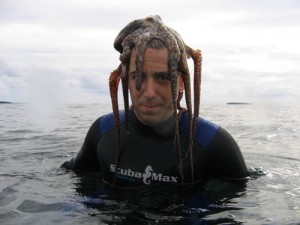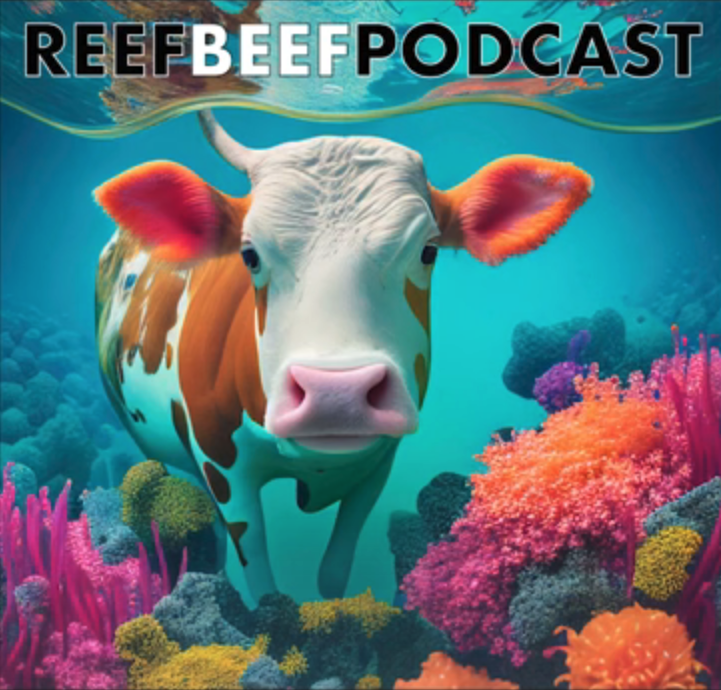From Calacademy.org
Richard Ross cares for a diverse array of creatures as an Aquarium Biologist at the California Academy of Sciences, from corals to octopuses—even an albino alligator. As lead biologist of the Academy’s Philippine Coral Reef team, he is responsible for day-to-day care of the world’s deepest coral reef display, a 212,000-gallon tank home to thousands of colorful tropical fishes and corals. Ross is also a renowned cephalopod expert, having made a variety of breakthroughs in breeding and displaying the class of marine animals which includes cuttlefish, squid and octopuses, known for their intelligence and unique anatomy.
Of the Academy’s 38,000 live animals, the dwarf cuttlefish (Sepia bandensis) aren’t the biggest, but one could argue they’re among the flashiest. Able to rapidly change their skin color, dwarf cuttlefish frequently flash moving patterns across their skin, and can quickly blend into surroundings. Thanks to Ross’ tireless efforts, the Academy became the first U.S. aquarium to successfully breed the fascinating species in captivity in 2009, allowing visitors a chance to see these behaviors up-close. Since North American waters do not house any native cuttlefish, only a handful of species are typically seen in zoos and aquariums in the United States. Now that these small animals are available from a sustainable captive source, Ross hopes that other zoos and aquariums will take advantage of the opportunity to share these intriguing animals with their visitors as well. Ross was also one of the first to display and breed the dwarf cuttlefish’s showier cousin, the flamboyant cuttlefish (Metasepia pfefferi) in captivity.
Often called rainforests of the sea, coral reefs are the most diverse aquatic ecosystems on the planet, and also among the most endangered. For the Academy’s Philippine coral reef display, the deepest in the world, Ross and his colleagues take special care to minimize impact on wild habitats while raising awareness among visitors about the splendor and fragility of those ecosystems. They grow corals in captivity, and participate in a collaborative research project to develop new methods for captive tropical fish breeding. In 2011, Ross was one of a handful of aquarium biologists to accompany a team of Academy researchers on a landmark expedition to survey biodiversity in the Philippines. Having completed an elaborate permitting process, they were able to bring a variety of live animals back to the Academy—including a coconut octopus (Amphiocotpus marginatus), a species that had never before been displayed in a U.S. aquarium—where they’re helping to educate more than 1.5 million visitors per year.
A lifelong aquarium hobbyist, Ross kept aquarium tanks with his father throughout his childhood and spent his high school years working in pet and aquarium shops, but his path to the aquarium profession was by no means typical. For 15 years, Ross performed across the country as a professional juggler, entertaining crowds at more than 500 shows per year before deciding to become a stay-at-home dad when his daughter was born. Ross then began volunteering at the Academy’s Steinhart Aquarium, and ultimately signed on as a full-time staff biologist as the Academy prepared to open its brand new facility in 2008. Ross lives in Alameda with his wife and daughter and their menagerie, which includes hairless cats, giant tortoises, corals, fish, and of course, cephalopods.
The California Academy of Sciences is home to Steinhart Aquarium, Morrison Planetarium, Kimball Natural History Museum, and world-class research and education programs—all under one living roof. Visit www.calacademy.org for more information.

